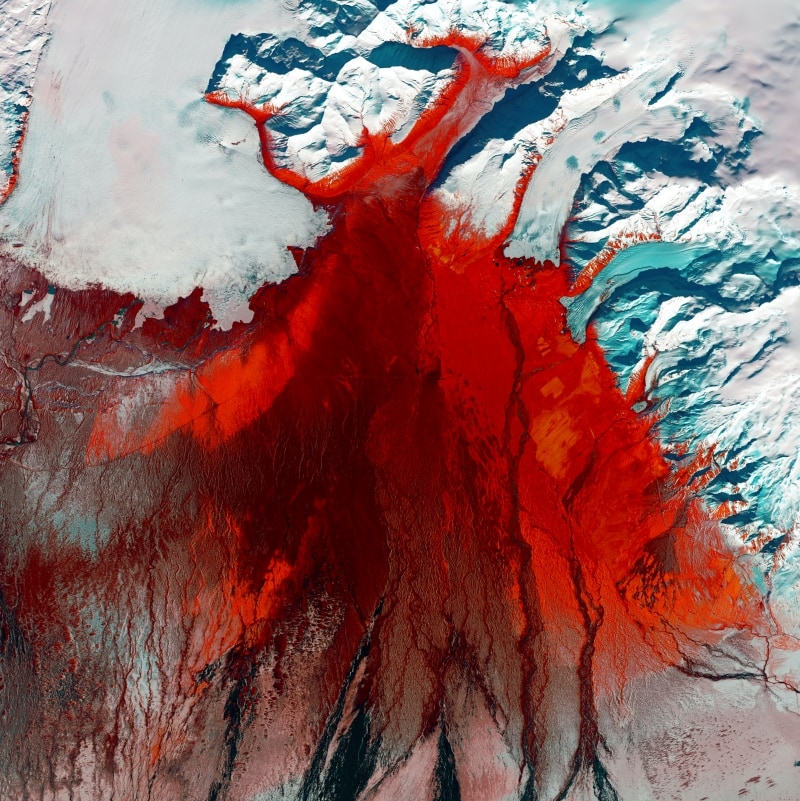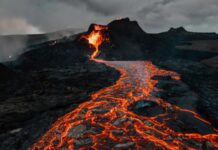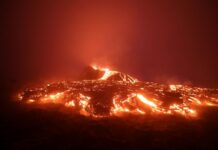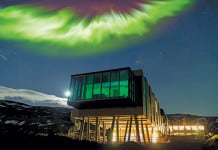
Update as of Nov. 21: With a volcanic eruption likely imminent within 20 miles of Keflavík airport, the country’s main hub for international flights, two scenarios have been posited by AccuWeather meteorologists: an eruption Tuesday into Wednesday would direct ash to the east, toward or north of Scandinavia; however, Thursday into Friday, a change in wind direction could impact parts of northern and central Europe and by extension, international travel.
A state of emergency has been declared in Iceland due to a series of earthquakes that experts see as a warning sign of an imminent volcanic eruption on the island’s Reykjanes Peninsula.
The seismic activity, which began Oct. 24 and has intensified since, resulted in the shutdown of Iceland’s most famous tourist attraction, the Blue Lagoon, as well as evacuations and travel restrictions in Grindavík, a coastal city about 42 miles southwest of the capital, Reykjavik.
The National Police Commissioner of Iceland declared a Civil Protection Service Level of Emergency on Nov. 10.
A Spike in Volcanic Eruptions in Iceland
The earthquakes come as Iceland has been experiencing a spike in volcanic eruptions, which have occurred about every 12 months since 2021. Earthquakes on the Reykjanes Peninsula have been associated with recent lava flows at the Fagradalsfjall volcano, and seismologists say the volcano could be set for a major eruption.
“Evacuations will remain in order until seismic activity subsides,” the Icelandic Tourist Board said in a Nov. 10 announcement. “It is impossible to predict the exact timing and location of a potential eruption close to Grindavík. The Icelandic Met Office, in collaboration with the Department of Civil Protection and Emergency Management and a team of scientists from the University of Iceland, is actively monitoring the situation and thoroughly analyzing any unfolding developments.”
Icelandic officials are not currently anticipating interruptions in air travel to the island related to the emergency.
“While the possibility of air traffic disturbance cannot be entirely ruled out, scientists consider it an unlikely scenario,” according to the tourist board. “The potential disruption to flight traffic would depend on factors such as the location and size of the eruption. Typically, the impact of volcanic eruptions is confined to specific, localized areas. Notably, previous eruptions in the area did not impact flights to and from the country.”
The Blue Lagoon, a geothermal pool that attracts more than 700,000 visitors annually, is located in Grindavík. Management at Blue Lagoon announced on Nov. 9 that the lagoon, Silica Hotel, Retreat Spa, Retreat Hotel, Lava, and Moss Restaurant would all be closed until at least Nov. 16 due to the emergency.
“Considering disruptions to our guests’ experience and the sustained pressure on our employees, these precautionary measures were taken to ensure safety and wellbeing for all,” according to the announcement.
Seismic and volcanic activity are common in Iceland, which is situated where the North American and Eurasian tectonic plates diverge, making it one of the most active volcanic regions in the world. Volcanoes like Fagradalsfjall and geothermal features like the Blue Lagoon are among the island’s top draws for tourists.
Icelandic volcanoes have caused major travel disruptions in the past. In 2010, for example, volcanic ash from the eruption of the Eyjafjallajokull volcano grounded more than 100,000 flights worldwide over a one-week period, temporarily stranding millions of air travelers.
This article originally appeared in Prevue’s sister publication: recommend.com.








